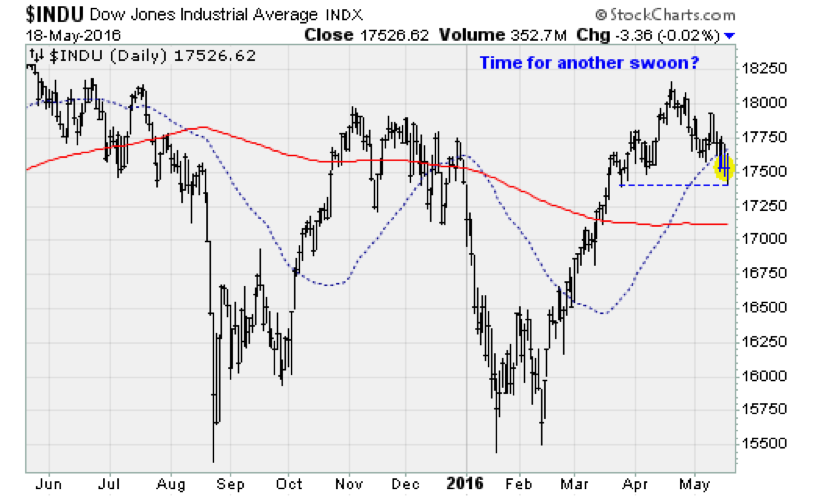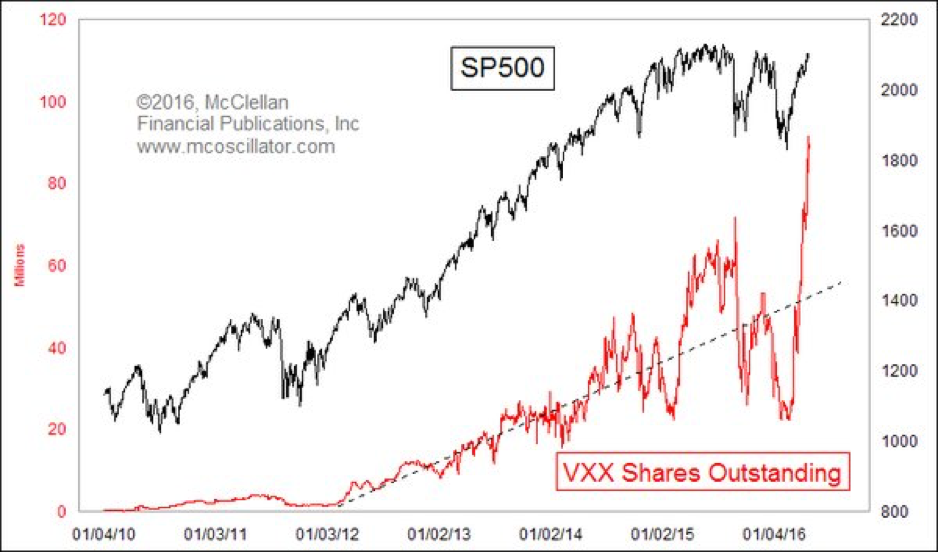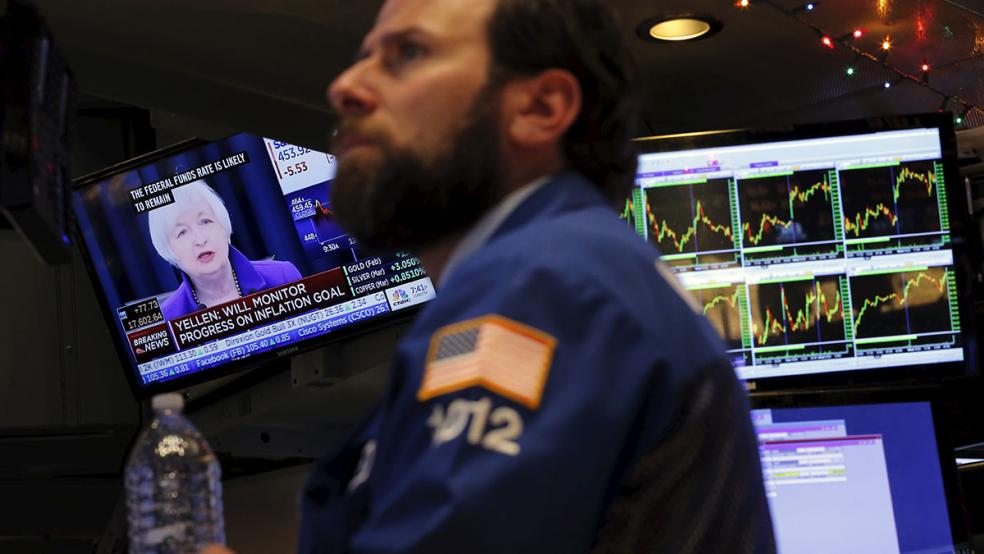A long lull in the stock market looks set to end.
It’s been nearly a year since the S&P 500 hit its all-time high. The Dow Jones Industrial Average has been flirting with the 18,000 level since before Christmas 2014. And for the past three months, the Dow has been stuck in a 500-point trading range. But large-cap stocks have traced out an epic head-and-shoulders reversal pattern, with a "neckline" right at 17,500.
Headwinds are accumulating fast: uneven U.S. economic growth, evidence of caution by U.S. consumers, falling global trade volumes, energy sector defaults, an increasingly contentious U.S. presidential contest, credit woes in China, falling corporate profitability and, most importantly, indications that the Federal Reserve — spurred on by steady job growth and rebounding inflation — is set to hike interest rates as many as three times this year.
Related: Apple's iPhone Nightmare Threatens Entire Stock Market
As we enter a period of historical seasonal weakness for stocks, investors would do well to brace for a turbulent summer. Because Wall Street insiders, as I'll explain below, already are.
Wednesday’s release of surprisingly hawkish Federal Reserve meeting minutes from the April policy meeting rattled investors. Those minutes were a sharp turnaround from what was considered a "dovish" statement from the Fed last month. In the minutes, policymakers noted that a June rate hike would be appropriate should second quarter economic data show a reacceleration of growth.
Futures traders increased the odds of a June interest rate hike from 4 percent to 35 percent according to TD Securities as the Fed acknowledged that stable job gains and rebounding inflation will force the issue on policy tightening — no matter the temper tantrum from stimulus-obsessed traders — despite concerns about consumer spending, the "Brexit" referendum and the situation in China.
We'll know more when Fed Chair Janet Yellen speaks on June 6 ahead of the release of the May jobs report on June 10. The next Fed policy meeting will begin on June 14. But what we already know is that the mood among many Fed officials seems to have changed in recent weeks.
Related: US Bank Stocks Rally on Hawkish Fed
No less than four officials made comments on Tuesday, including San Francisco Fed President John Williams, who repeated that two or three rates hikes for the year was a reasonable assumption, contrary to Wall Street’s expectations. Richmond Fed President Jeffrey Lacker told The Washington Post that the case for a June rate hike was pretty strong. And Dallas Fed President Robert Kaplan said the U.S. economy was strong enough to justify a rate hike in the "not too distant future." New York Fed President William Dudley said Thursday that a rate hike in June or July is a “reasonable expectation.”

As investors realize the Fed is serious about more than one rate hike this year, a market breakdown from here would be violent, likely slicing right through the 2,000 level that was so important back in December.
Related: Morgan Stanley Upgrades European Defensive Stocks to 'Overweight'
The market's vulnerability has caught the eye of a number of Wall Street analysts:
- Last week, Goldman Sachs strategist David Kostin told CNBC he had turned bearish and that it was time to play defense in "a tough market" given concerns over profit margins, waning buybacks and more.
- Marko Kolanovic, a quantitative analyst at J.P. Morgan, is worried that high leverage and waning liquidity on the trading exchanges could exacerbate any market decline.
- Bank of America Chief Investment Strategist Michael Hartnett is a "seller of risk" on fading U.S. business optimism and falling profitability.
- Matt King, Citigroup’s head of credit product strategy, is worried this "is the tipping point" where central bankers lose control of the situation.
- Analysts Michael Riesner and Marc Muller at UBS have warned clients of a likely market swoon into the June/July time window after a short bounce into mid-May based on technical momentum indicators.
Related: Investors Dump Stocks at Fastest Rate Since Aug. 2011

We are on the precipice of a serious turn, which explains the rising interest in long volatility assets, such as the Short-Term VIX (VXX), as insiders pile into positions that are set to profit should a negative surprise from the Fed spur a nasty market selloff in the weeks to come.






